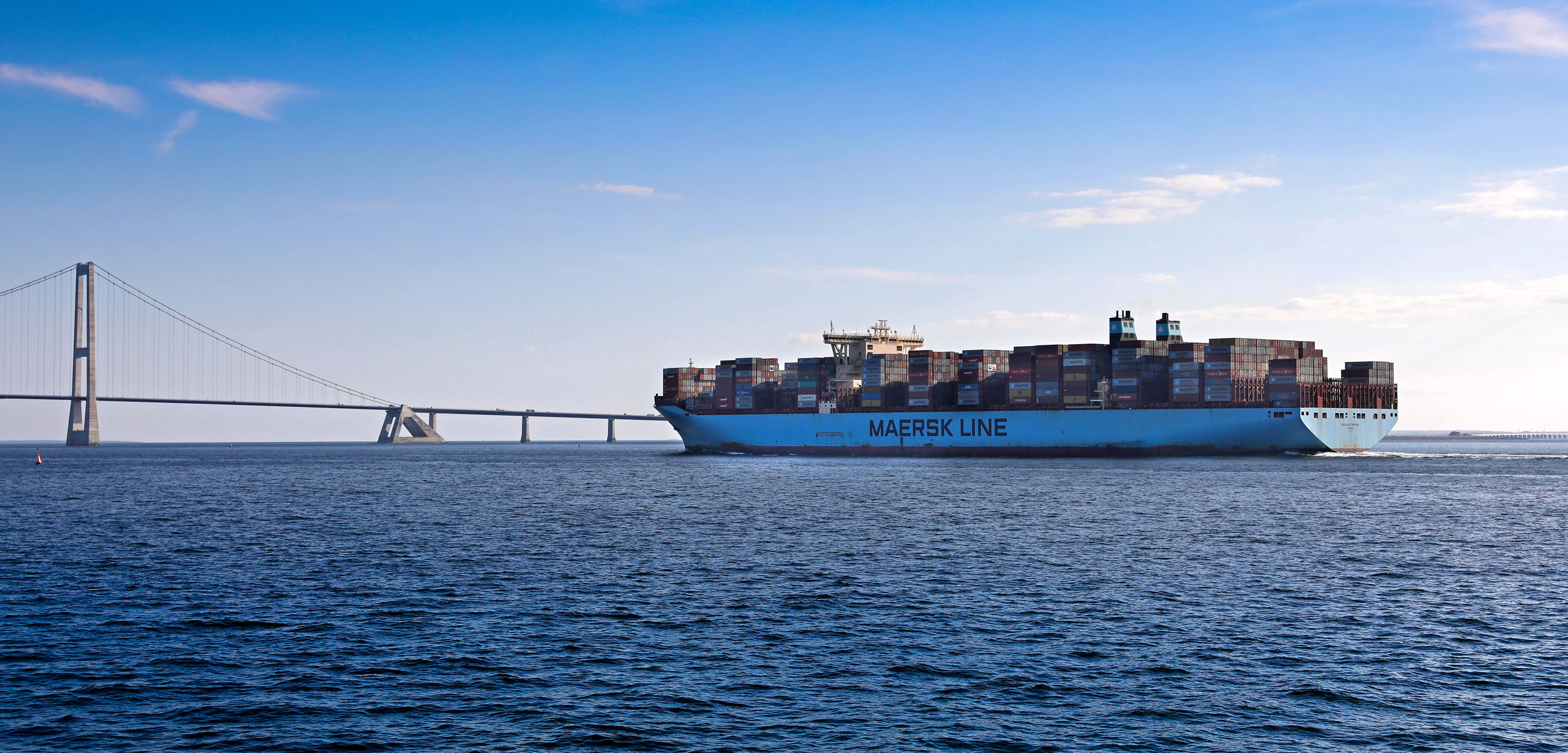A Pending Shift in a Prominent Shipping Lane Will Be Used to Study Noise Pollution
When some 80,000 ships are sent on a different path to the Baltic Sea in 2020, researchers will be watching to see how porpoises respond.
Article body copy
The main shipping route into the Baltic Sea is about to be redrawn: starting in the summer of 2020, tens of thousands of ships per year will shift to a different course through the Kattegat Strait. The unusual move, agreed to by the two bordering countries of Sweden and Denmark, aims to improve ship safety. But for ecologists, it provides a unique opportunity to see how marine life responds to the sudden change in noise pollution.
A large boat can be incredibly loud, mostly because of the swarm of tiny popping bubbles produced by its propellers. A supertanker or frigate makes noise of about 160 decibels under the water—louder than the call of a humpback whale. (Noise levels are measured differently underwater than above water, but that’s about as loud as a rock concert.) In a shipping lane, that noise adds up. The Kattegat Strait is one of the busiest waterways in the world, says Jakob Tougaard, a marine biologist from Denmark’s Aarhus University who studies the area. The strait hosts about 80,000 ships per year, including everything from oil tankers to cruise ships.
The noise from such ships can affect marine life. Studies have shown that some fish, for example, spend more time patrolling for enemies and less time caring for their young when surrounded by loud boat noise. And some marine mammals, such as whales, can find it harder to find food or communicate when background noise levels are high. But it is difficult to untangle the effects of noise pollution from all the other challenges that marine life faces, from toxins to warming waters. Researchers don’t usually have the option to dampen shipping noise to isolate its effects, let alone move a shipping lane. So they are keen to take advantage of natural experiments like this one as the opportunities arise. In the Kattegat and nearby Baltic Sea, researchers are particularly interested in seeing how porpoises react, as some of their populations are endangered.
Last month, Tougaard and his colleagues started deploying underwater microphones throughout the Kattegat Strait to record the sounds of everything from rainfall to boats. They will use their recordings to make a model of what the soundscape looks like now, and compare that to the new soundscape after the shipping lane moves. The main change to the shipping lane will be a new branch about 20 kilometers east of the existing routes; that should change the soundscape dramatically, Tougaard says. Of particular interest is an area close to shore and within a marine protected area, which currently hosts only local traffic, but will be part of the new shipping route for smaller vessels.
They will also be listening for whether the local porpoises change their location and behaviors. “If there’s an effect, we will see it,” says Tougaard. They expect the porpoises will move away from the new shipping lane, which should help to reveal exactly how much noise they are willing to tolerate. That in turn should help to unpack the long-term impacts of noise. Even small changes can add up to effects on the population, Tougaard notes. “If they miss too many opportunities to hunt, or nurse, or find a mate, then it shows up.”
The information gleaned through the experiment will feed into decisions about moving other shipping lanes, says Tougaard. “A lot of people talk about moving shipping lanes, especially if one goes through a marine protected area,” he says. But moving a shipping lane can cause other problems, including making the path longer, resulting in more carbon dioxide emissions from the ships. So researchers need more data, Tougaard says, about exactly what impacts the ships and their noise have on marine life. “I want to make sure the politicians have the best information,” says Tougaard.
“These natural experiments are incredibly important,” says Peter Tyack, a behavioral ecologist at the University of St Andrews in Scotland who studies acoustics. After the 9/11 terrorist attacks in the United States in 2001, for example, when global shipping temporarily ground to a halt, researchers were able to see a reduction in stress hormones in endangered right whales in the Bay of Fundy when the waters quietened. The Sierra Club is one of several environmental organizations working to lower noise levels for the sake of those whales.
While a lot of attention is given to the acute problem of very loud noises causing mass whale strandings, Tyack notes, the subtler changes to metabolism or behavior caused by chronic noise exposure could be worse overall, because chronic noise is so pervasive. “That could have a bigger impact on a population than an accidental acute exposure,” he says.
Some places and organizations have already made moves to reduce ocean noise. Off the coast of Vancouver, British Columbia, for example, ships are asked to slow down at certain times of year to help reduce noise for southern resident killer whales. This May, in an effort to help the whales, the Canadian government announced measures that included extending the voluntary speed reduction to a longer time period and a bigger area of water.
Projects like this one in the Kattegat help to judge the limits of just how much noise marine life can tolerate. “Yes, they can adapt to noise, just as we can adapt,” says Tougaard. “But at some point, like in a discotheque, communication is no longer possible. At some point, these animals run out of options, too.”

